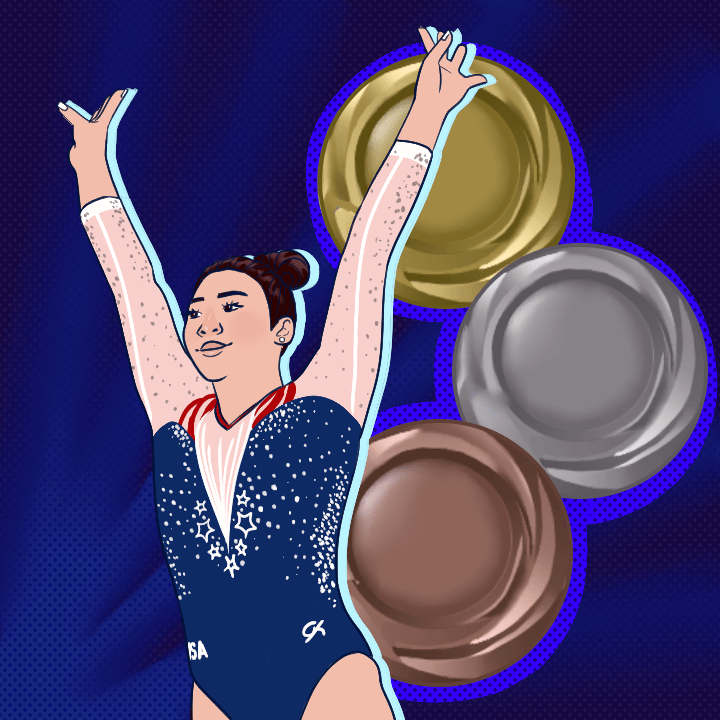By: Ally Brewster
Women’s artistic gymnastics was at the forefront at the Summer Olympics once again this year in Tokyo. Artistic gymnastics is a highly competitive, technical sport that takes a lifetime to perfect. The sport garners millions of viewers worldwide each Olympics, and marketing teams use the sport as one of the faces of the games. Artistic gymnastics has become one of, if not the, most popular sport each Olympics.
At the Olympics, artist gymnastics is set into two categories: team and individual. Each member of every country competes in qualifying rounds for team finals, all-around finals, and individual events finals. Each competitor gets a chance to let their abilities shine as they compete on each apparatus. This year, each competitor of the USA Gymnastics team shined with Simone Biles, Sunisa (Suni) Lee, Jordan Chiles, and Grace McCallum. Jade Carey and MyKayla Skinner participated as individual athletes for individual events. Though each gymnast shined, one gymnast really caught viewer’s attention. This notoriety was expected as she is a fan-favorite in the Olympics: Sunisa Lee.
But, who is Suni Lee?
Suni Lee, born Sunisa Phabsomphou, competed in her first ever Olympics this year at only 18-years-old. Though she graduated high school just a few months ago, the Minnesota-native has been doing gymnastics since she was six-years-old. She first began her training at Midwest Gymnastics Center. No Olympic journey is easy, and Suni’s was no exception. Olympians need to train most hours of the day to perfect their craft, which can be difficult to afford. Suni’s father took that problem into his own hands. Her father had always been one of her biggest supporters. He decided to build her a wooden beam in their backyard for her to practice on when they couldn’t afford a real one.
Notably, Suni Lee is the first Hmong-American gymnast to ever compete at the Olympics. Her parents are immigrants from Laos. The Hmong community was excited to have this representation, especially after the year of anti-Asian rhetoric and violence. It meant a lot to the Asian-American community for Suni to be in the Olympics as a positive voice for the community. For some people, Suni was the first time they heard of the Hmong people – an ethnic group living mainly in southern China, Vietnam, Laos, Thailand, and Myanmar. By qualifying for the Olympics, she was able to represent her community. This moment can be used to educate the world on the Hmong people, their community, and the hardships they have fought to overcome.
Going into the Olympics, Suni was a newcomer to watch for Team USA. She was known for her stellar bar routines. Suni went above and beyond even her own expectations. She qualified not only for Team USA and bar individuals, but also for all-around and beam.
During finals, all of Team USA did amazing. The US team gave the competition their all and ending up winning a Silver medal. They were all ecstatic because, with the exception of Simone Biles, it was each member’s first time winning an Olympic medal.
As they went onto individual competition, the team members of Team USA continued to support each other, even while competing. Suni continued to dominate the competition in the individual rounds. She caught the attention of people as she performed beautifully on each apparatus in all-around. Her performance earned her gold in the all-around competition. With the win, Suni became the first Asian-American to win an all-around gold medal.
After the all-around, the individual competition continued with Suni competing on the beam and uneven bars. On beam she performed beautifully, just missing a medal by placing 4th place. Though she did not win a medaling placement, Suni was as impressive as ever as she competed amongst the best gymnasts in the world.
Coming into the competition, the uneven bars were known as Suni’s specialty. This proved to be the case as she performed a stunning routine. She was awarded third place and earned a bronze medal.
With each of her wins, Suni entered a distinguished group of Olympians that won a full set – earning a gold, silver and bronze medal. Suni made her community proud as she became the first Asian-American to win all-around. Suni is also the first Hmong American to compete in artistic gymnastics. Suni dedicated her Olympic wins to her father, who supported her through everything and watched her live her dream.






